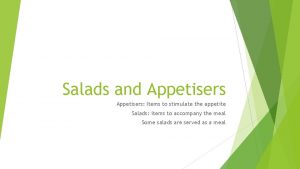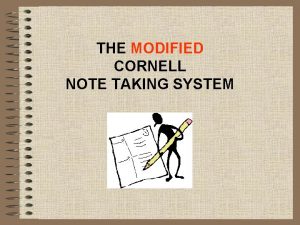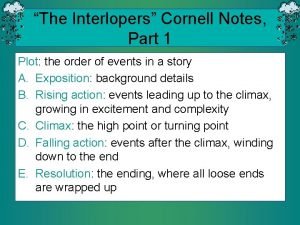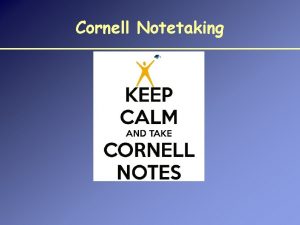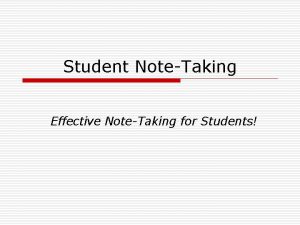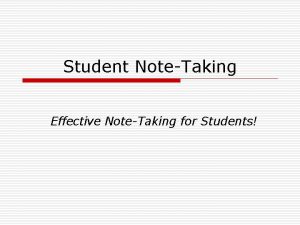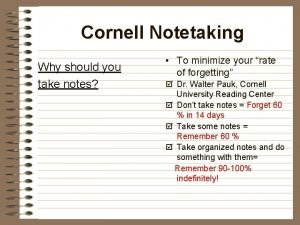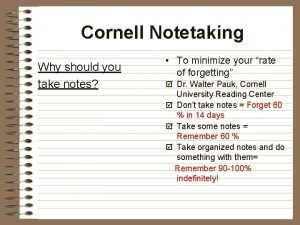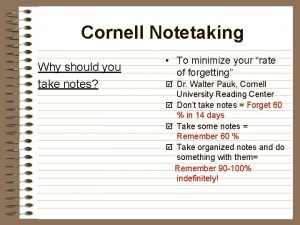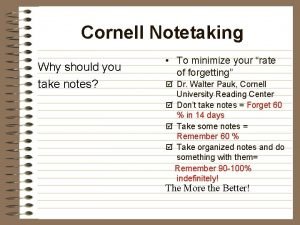Cornell Notes WHY TAKE NOTES Cornell notetaking stimulates









- Slides: 9

Cornell Notes

WHY TAKE NOTES? �Cornell note-taking stimulates critical thinking skills. �Developed in 1949 at Cornell University �Designed in response to frustration over student test scores �Note-taking helps students remember what is said in class. �Meant to be used as an easy test study guide

Topic/Title: Questions / Cue Words Name Class Date CLASS NOTES 2 1/2” Summary: 3 to 4 sentence summary across the bottom of the last page of the day’s notes

STAR – INTRODUCTION TO CORNELL NOTES �S = Set Up Paper � Put name, class, and date in upper right-hand corner. � All notes need a title. � Draw a line down the length of the paper, about one-third of the way in (about 2. 5 inches).

STAR – INTRODUCTION TO CORNELL NOTES �T = Take Notes �Paraphrase the text or lecturer in the right hand column. �Use selective listening to decide important information. �Use whatever it takes to cue your own memory system. You may, for example, use capitals, printing, underlining, arrows, or even pictures. �Don’t get hung up on spelling. �Use abbreviations that work for you. �Develop your own shorthand.

STAR – INTRODUCTION TO CORNELL NOTES �A = After Class (At end of Class) �As soon as possible, edit your notes. Reread them, looking for places to make additions, deletions, or clarifications. �Work with a PARTNER whenever possible. �Use a highlighter or underline to emphasize important points. �Note any points that need to be clarified with the lecturer during the next session. �NOW fill in the LEFT-HAND COLUMN with QUESTIONS, ICONS (SYMBOLS and PICTURES), and/or MEMORY KEYS.

STAR – INTRODUCTION TO CORNELL NOTES �R = Reflect and Review � Reflect – Summarize the notes, relating the subject to yourself and your personal experience. � Review notes regularly: �After class �At least weekly �Before the test �Cover the right column with blank paper. Review ALOUD.

CORNELL NOTES

CORNELL NOTES Cover the right side of the notes. Self-quiz


